Companies are always on the lookout for ways to boost their sales productivity. Sales productivity is crucial to building a stable source of revenue. The right tool at the right time can make or break a sale. High-performing sales teams use three times as much technology as low-performing sales teams. With several popular products available, it’s increasingly hard to pick the right one.
So, we’ve identified the best sales productivity tools and listed them under the following categories:
You can scroll to the categories that interest you most. We’ll explore the various sales productivity tools that fall under each software category. Let’s get started!
Customer Relationship Management
CRM (Customer Relationship Management) software helps businesses make customer communications and sales efforts more efficient. It helps process customer data and empowers organizations to build better relationships with vendors and clients. CRM is an indispensable tool for any sales-led organization. Here are the top CRM tools for making your sales and operations more efficient.

1. LeadSquared
LeadSquared CRM is a sales execution and field force management software all in one. It assists organizations in increasing closures, managing pipelines, and precisely attributing their ROI. For high-volume, sophisticated omnichannel sales, the solution is a natural fit. These are some of their features:
- Lead management tools.
- Sales automation and flexible, no-code workflows.
- Mobile CRM with geo-tracking abilities.
- Customizable reports and analytics.
Pros
- Highly flexible workflows that don’t require any coding knowledge.
- Dynamic lead management tool with several criteria of distribution available for customization.
- Their SmartViews feature makes data and customer information easy to access.
- AI-powered sales assistant and conversation intelligence for sales users.
- The powerful mobile field sales solution offers various tracking features.
- Fastest implementation time as compared to other CRMs in the market.
Cons
- They do not provide inbuilt chatbot as of yet but seamlessly integrate with all popular chatbots available.
- Third-party integration may take time, depending on the software.
2. Salesforce
Salesforce enables organizations of all sizes to maximize sales by automating operations and offering informed decisions. Salesforce CRM includes the following features:
- Contact and lead management
- Workflow automation
- Sales opportunity management
- Reports and dashboards
Pros
- Salesforce is suitable for large enterprises as they have experience working with larger organizations compared to newer CRMs.
- Comprehensive reporting and tracking tools are powerful and effective.
- It allows customization to suit your organization’s requirements.
- Salesforce offers a range of seamless integrations and options for businesses.
Cons
- Salesforce is an expensive option for most small businesses.
- It also requires a good deal of time spent in training employees to understand the software.
- As it isn’t a plug-and-play CRM, implementation takes longer than most other CRMs.
- Although they do offer mobile solutions, some of the features aren’t accessible when offline.
Compare Salesforce and LeadSquared
3. HubSpot
The HubSpot CRM platform serves as the foundation for the Sales Hub. Data, tools, and teams come together to provide a single source of information. Which brings reps high levels of productivity and efficiency. These are some of its SalesHub features:
- Sales automation
- Reporting and analytics tools
- Social collaboration features
- Mobile user support
Pros
- It provides a single platform for all your sales, marketing, and customer service needs.
- Their app marketplace offers easy-to-access integrations.
- It provides powerful automation and effortless lead generation.
- Their custom reports builder and tracking features are impressive.
Cons
- It only offers a few features in its free version.
- HubSpot is not the best option for large enterprises because of limited customization options.
- It does not offer in-depth customizations and may not be easily configurable.
- Users need to spend lots of time learning and understanding the software.
Compare HubSpot and LeadSquared
4. ZOHO
Zoho CRM is a cloud-based, integrated CRM platform. Zia, Zoho’s AI-powered sales assistant, gives sales reps sophisticated interpretations, solutions, and forecasts. Zoho offers the following features:
- Lead and contact management tools.
- Journey orchestration and omnichannel communication tools.
- Quote generation and portals for partners.
- Gamification for sales team management and rewards.
- Host of third-party integrations for users.
Pros
- The Zoho CRM is a one-stop solution for your project management needs.
- Gamification features create holistic sales rep experiences.
- The CRM provides intensive tracking features and is customizable.
Cons
- The platform doesn’t offer much to assist you in creating conversion-optimized forms.
- The sales dashboards in Zoho CRM are perplexing at times.
- It requires lots of customization during the implementation process.
- Some users have also reported back-end issues, downtime, and data leakage while using third-party tools.
5. Pipedrive
Pipedrive is a sales CRM and pipeline management software. It helps users keep track of even the most complicated sales processes. Below are some of its remarkable features:
- Lead management and communication tracking.
- Calendar, churn, and campaign management.
- Reports and insights
- Revenue forecast reports
Pros
- Simplistic UI and different levels of customization are available.
- The ease of use makes it a great tool for most salespeople. Many other CRMs require different levels of training. Whereas Pipedrive doesn’t.
- Follow-ups and calls are easy to achieve with Pipedrive’s reminders and notifications.
Cons
- Pipedrive is built only for the sales team. It means that it doesn’t consider the fact that marketing and sales go together.
- It also means that even basic marketing automation is not available on Pipedrive.
- Pipedrive does not support complete automation as compared to other CRMs.
- The workflows need improvement as triggering existing automation features is difficult.
6. EngageBay
EngageBay is the all-in-one solution to manage your customers, orders, shipments, tasks, calendar events, and more in one complete package. It helps automate your business processes and allows you to focus on growing your business.
Below are some of their features:
- Contact management
- Appointment scheduling
- Marketing & Sales Automation
- Email template builder and autoresponders
- Ticket automation
- Instant support and more
Pros
- Ease of integration
- Helps create landing pages effortlessly
- Advance features in the free plan
Cons
- Limited templates
- Difficult to set up good workflows
- Not a comprehensive product for all marketing automation needs
7. Affinda
Affinda is a versatile CRM and Invoice OCR software solution, combining advanced artificial intelligence technology with a practical approach to sales and customer management. Its powerful Invoice OCR technology sets it apart, transforming paper-based processes into digital, automated workflows. Here are some of Affinda’s key features:
- Invoice OCR capabilities for digitization and data extraction.
- Intuitive customer relationship management tools.
- AI-assisted automation of daily tasks and workflows.
- Deep-learning driven analytics and custom reporting.
Pros
- Its invoice OCR technology makes data extraction from paper invoices seamless and error-free.
- Affinda’s CRM tools are user-friendly and fully customizable.
- The AI-powered automation features can streamline routine tasks, improving productivity and freeing up valuable time.
- Its intelligent analytics and customizable reports provide insights that can help businesses make informed decisions.
- The platform is known for its speedy and smooth implementation.
Cons
- As of now, Affinda does not offer an integrated chatbot feature, but it can integrate smoothly with most popular chatbot systems.
- Some users have reported that integration with certain third-party software can take time, depending on the complexity of the software.
Sales management becomes a breeze with CRM tools. Next, let’s look at some of the best project management tools.
Project Management Tools
Project management tools are essential whenever there is a need for people and teams to collaborate. They help organize the tasks, track progress, manage collaborators, and more for successful projects. Such tools make communication effective so that messages don’t get lost in the email threads.
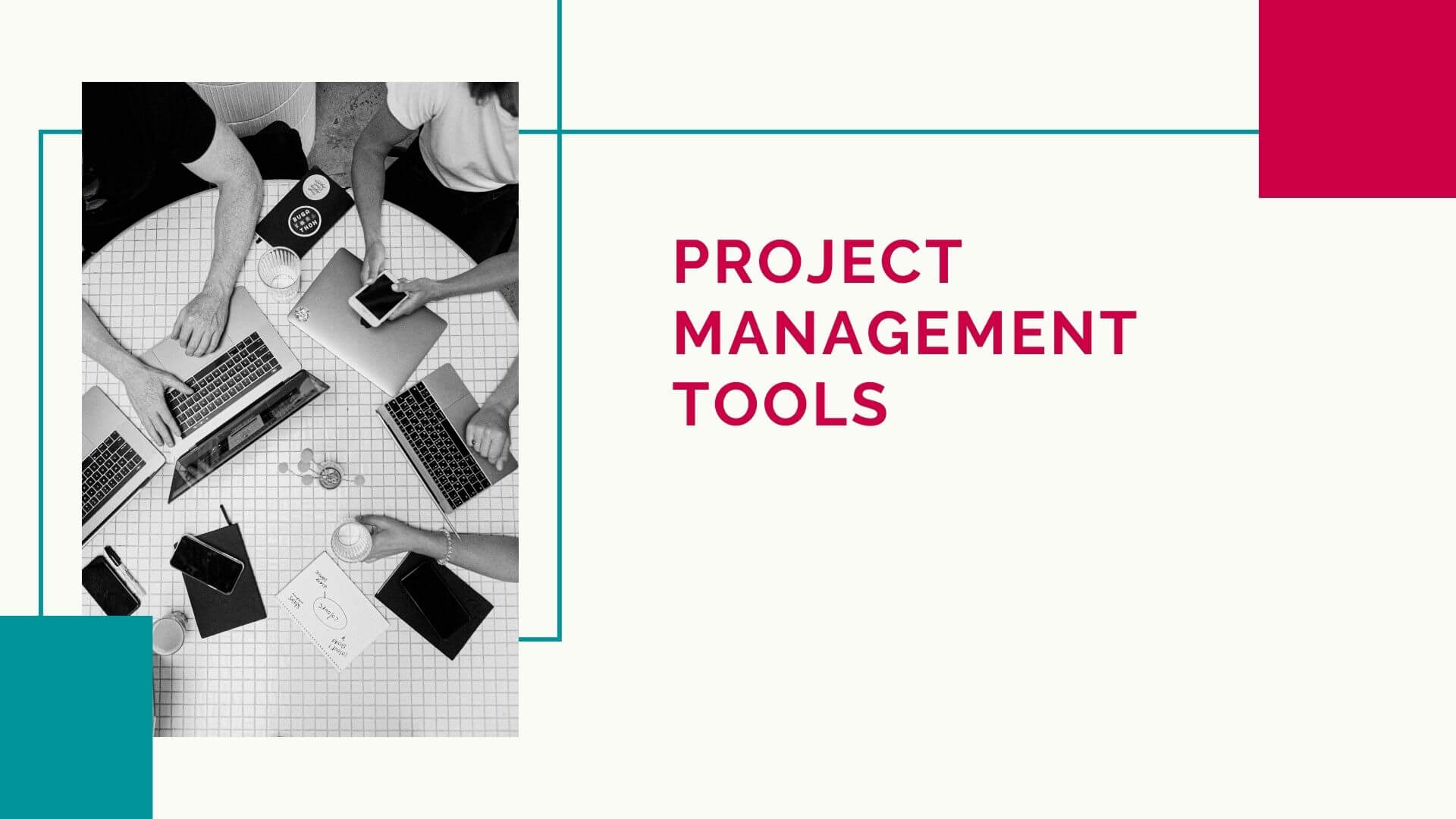
7. ProofHub
ProofHub is an all-in-one project management and collaboration software that brings together everything a team needs to stay in ultimate control of their tasks, projects, clients, and communications. It simplifies the way teams manage their everyday tasks, whether they are working remotely or under the same roof.
Pros:
- The ability to split the larger task into different sub-tasks makes the software very easy to use.
- ProofHub has a simple fixed pricing structure and does not charge a per-user fee.
Cons:
- Although training modules are available, the software has a steep learning curve.
- UI and some front-end features could have been better.
- Forms are not easy to set up.
- Some users have also reported too many notifications as a drawback of this software.
- ProofHub doesn’t readily integrate with many third-party apps.
8. Nifty
Nifty is an award-winning project/task management software and team collaboration solution that unites the entirety of a task or project’s lifecycle.
The tool helps you create tasks for sales actions and collaborate on Nifty or Google docs to refine sales scripts or presentations. Businesses can also track the progress towards their goals as completed tasks to automate the progress of a project’s milestone.
Pros:
- Nifty is easy to use and can be used for anything from chat and task management to full-blown project management.
- Nifty’s cross-project tools make it easy for individuals and managers to see who’s working on what and where every initiative stands at any time.
- Integrations with Google, Zoom, Microsoft, Webex, Skype, and more make Nifty a collaboration hub capable of document editing, video calling, and voice chats.
Cons:
- While Nifty offers an open API, it doesn’t have as many native apps as some of its peers.
- Users wish to dial back the amount of notifications they receive by default.
- Nifty’s reporting is missing some popular metrics, such as burn-down charts
9. nTask
nTask is an incredible sales productivity tool. Not only does it allow you to easily organize your tasks and projects, but it also provides helpful reminders that keep you on track.
You can create custom templates for specific tasks, assign tasks to team members, and get notifications when deadlines are approaching. Plus, you can even collaborate with teammates on projects in real time from any device.
With nTask, you can get more done in less time and stay up to date with your team’s progress. It’s the perfect tool for any sales team looking to increase their productivity and efficiency.
Pros
- Easy to use and customize
- Keeps you on track with reminders
- Real-time collaboration
- Assign tasks to teammates
Cons
- Limited customization options
- Lack of reporting features
10. Basecamp
Basecamp is a real-time communication platform that helps teams keep track of targets and actionable tasks. It does this through to-do lists, calendaring, deadlines, and document sharing. Its features include:
- To-do lists and messaging boards.
- File storage for documents and appointment schedules.
- Real-time chat options and questions to check in on teammates.
- Notifications, charts, and reports.
Pros
- Basecamp can break down large tasks into smaller portions making tracking effortless.
- The program, which replaces instant-messaging tools, allows for quick communications without the hassle.
- Its visual text editor lets users add information and deadlines to each item.
Cons
- As of now, there is no time tracking.
- There is no way to archive a specific topic.
- There is no feature for highlighting or starring.
11. Trello
Trello is an easy-to-use, Kanban-based visual collaboration tool for teams of any size. It is a dynamic, breathing project hub for cross-team communication. Its features include:
- Front/Back Card Overviews
- Alerts and notifications for assignments
- Calendar view for scheduled tasks
- Simple drag-and-drop way of managing work status
- The easy organization with cards, tags, labeling, and comments
Pros
- A well-organized board and card system.
- Enable your staff to take part in crucial topics in both group and one-on-one chat sessions
- A simple checklist to track the tasks
- The Power-Up calendar in Trello helps prioritize projects with shorter deadlines.
Cons
- Cards/tasks can only be for one Board/Project.
- The use of keyboard shortcuts and productivity is in short supply.
- Trello has a limited amount of storage.
12. Asana
You can improve task management by using Asana, a leading project management software. You can easily automate some of your most time-consuming communication and collaborative tasks. This tool includes the following features:
- Team communications and group discussions.
- Notifications and reminders for task completion.
- Setting priorities and due dates, integrations, and customizable dashboards.
- Tracking, activity feed, tags, and comments.
Pros
- The project assignment has a title and a timeline, making tracking effortless.
- Team leaders can track each task using Asana dashboards, which are very customizable.
- Asana can effectively integrate with a wide range of third-party apps and services.
Cons
- Because of the large number of features offered, a beginner may feel intimidated. Onboarding training is a must for new users to get the most out of Asana.
- Small teams or single projects are not ideal for Asana. The offered options and capabilities may be a mismatch or excess for some projects.
- It does not track the time spent by members on their tasks.
13. Wrike
Wrike is a flexible online project management and works collaboration tool. It allows users to optimize workflow and consolidate communication. With real-time reports, you can easily see the progress of all your teams’ tasks. Its features consist of:
- Task prioritization, Gantt charts, and assignment creation.
- Kanban boards and release forecasting.
- Monitoring progress and time tracker.
- Budgeting, to-do lists, and drag and drop features.
Pros
- Wrike offers a great dashboard that displays project and task progress.
- It comes with a powerful search engine to easily access the desired content.
Cons
- Wrike has a steep learning curve and is tough to master.
- Adding new users and assigning ongoing projects to them is difficult.
- The application dashboard lacks powerful filtering capabilities.
14. SmartSheet
Smartsheet’s work revolves around sheets that include information about projects. Users can enter characteristics like summaries, statuses, deadlines to find tasks. Users can also upload files, leave comments, and seek updates, among other things. Smartsheet offers the following features:
- Workflow automation and content management.
- Data connections and digital asset management.
- Dashboards, forms, and integrations.
- No-code platform Workapps.
Pros
- Smartsheet’s very intuitive and user-friendly UI can help you improve your workers’ productivity.
- Everyone is in sync as the tool offers reminders, status reports, and notifications.
- The platform’s records, extensive history, and shared views can strengthen each team’s accountability.
Cons
- Smartsheet is very expensive.
- Companion software is necessary for time tracking, budgeting, and resource management.
- Pages do not update in real-time or save automatically after each keystroke.
15. GanttPro
GanttPro is ideal for small organizations that only need basic project management tools. It doesn’t have features like reports or invoicing tools. Though it does include budgeting, it performs well and is simple to operate. Its primary features are:
- Prioritization, progress, and customization
- Virtual resources and action logs.
- Budget tracking and analysis.
- Task time tracker and time logs.
Pros
- Cost-effective and ideal for small businesses and freelancers.
- Very well-designed Gantt charts.
- Tasks have custom fields, a Kanban board display, and a critical path functionality.
Cons
- There are no reporting capabilities for billing payments.
- There are few integrations available, and they aren’t ideal for larger companies.
- A mobile app is not available.
16. TeamGantt
TeamGantt is a cloud-based Gantt chart and project planning system. Users can see what every team member is working on and comment on tasks. This project management tool offers the following features:
- Portfolios, calendar, and list views.
- Time tracking and project history.
- Drag-and-drop features and easy collaboration.
- Project templates and availability of teams to work.
Pros
- It’s simple, user-friendly, and intuitive to use.
- Interactive Gantt charts.
- The tutorial content makes it much easier to access and understand the software.
Cons
- Discussions, alerts, and posted files could all use some improvement.
- Budgeting or invoicing tools are not available.
- The reporting function is average.
Below are the best sales productivity tools for field sales management.
Field Sales Tools
Field sales tools enable your outside sales reps or field reps to work more efficiently. They also help managers keep a tab on their team, track their work log, and help them on the go. The essential features that help reps and managers are:
- Automated day plans for field sales agents
- Meeting recommendations and reminders
- Location history
- Route guidance and optimization
- Geofencing to prevent false meeting logs
- Ability to upload/scan documents for faster onboarding

17. Lystloc
Lystloc is a real-time location-based field force automation software that aids businesses to measure and enhance their field employees’ productivity and performance seamlessly from anywhere across the globe. This software benefits the organization by boosting revenue and their field workforce productivity. Lystloc is exclusively used to track live location, and location-based attendance, record customer visits, measure distance travelled, generate data on demand, and much more. The tool is entirely built using cutting-edge technologies with great properties like speed, flexibility, security, and affordability.
- Live and Offline Location Tracking with Route & Distance Travelled
- Task Management
- Customer Visits with Checkin & Checkout
- Real-time Battery, Internet & GPS Status
- Location-based Attendance with Geo-fencing
- Data Insight on Demand
Pros
- Selfie attendance, Fingerprint authentication for easy attendance marking
- Most accurate tracking of employee work location, travel routes with the overall distance
- Using location hierarchy, create perfect sales territory mapping to monitor and increase field sales productivity
- Fuel allowance report based on Mode of Transport & Designation of the user and stand-alone Reimbursement approvals for other expenses like Food, Accommodation, etc.
- Customizable meeting notes
- Personalized data insights on demand
- Integrations with HRMS, CRM, and Payroll software
Cons
- There is no separate feature for leave management and fleet management
- There is no in-app chat box functionality
18. Repsly
Repsly’s retail execution solution enables field teams to execute at their best. The Repsly mobile app enables teams to operate better on the go. You can also collect data on their point-of-sale execution. They offer the following features:
- Customized forms and workflow tracking.
- Appointment scheduling and advanced reporting.
- Route optimization and territory hierarchies
- In-App messaging and communication features.
Pros
- Easy to use and commendable customer service.
- Collaboration and communication tools encourage teams to work together and compare their results.
- Easy implementation.
Cons
- It is expensive for small businesses.
- Lack of analytical tools within the software.
- Some users may face issues navigating the interface.
19. Badger Maps
Badger Maps is a route planner for field sales that simplifies territory management. It uses a map to show data, optimize daily routes, and provides meeting reports. Its features consist of:
- Route optimization and lead generation tools.
- Meeting records logging and field activity reporting
- Interactive customer data visualization
- Segmentation of customer data on maps
Pros
- Trace the route of customer visits in a straightforward, speedier, and organized manner.
- Integration with Google Maps gives a high degree of accuracy.
- The program’s UI is simple and intuitive, making it ideal for beginners.
Cons
- The loading speed can be slow at times and cause lags.
- Settings and filters have specific designs which can feel restrictive.
- Implementing complex levels of data can cause issues.
20. LeadSquared Field Sales CRM
Even if you’re miles away, you can keep an eye on and track your field sales staff. The mobile CRM software will find nearby leads depending on the agent’s location. Afterward, your agents can come in for a quick meeting or follow-up. Their key features include:
- Field sales tracking and reporting.
- Geo-fencing and Field force automation.
- Field Agent churn management and payment management.
- Lead capture, distribution, and notes feature.
Pros
- The app works seamlessly online as well as offline.
- It offers a complete overview of field sales reps and the distance traveled.
- The app notifies administrators of field reps’ activities with robust tracking features.
Cons
- Data at times may not get automatically updated.
- UI could be confusing without initial training.
- Implementation speed can vary depending on the number of users.
21. Salesforce Maps
The Salesforce Cloud gets location intelligence with this multi-cloud app. Territory optimization and live updates empower your staff at every location. Use Salesforce maps to spot problems, improve safety, and save money, track your leads. These are its primary features:
- Data visualization
- Planning territorial visits
- Location tracking in real-time
- Route and schedule optimization
Pros
- Prioritize accounts to visit first, visualize the locations of your prospects by stage.
- Determine how many sales reps you need in a given region. And where they should be to maximize sales resource capacity.
- Make informed judgments about who to see and when.
Cons
- Expensive for smaller sales agencies.
- Some features like the calendar extension are not user-friendly.
- Training sales reps might take up a good amount of time.
22. Sales Rabbit
SalesRabbit is a one-stop field sales solution. A mobile CRM and sales empowerment service intended primarily for outside sales teams. They target field sales and door-to-door sales teams. Lead tracking, lead management, and d2d needs are all covered by the canvassing app. The key features of this app are:
- Sales territory mapping and lead generation.
- Leaderboards, sales tracking, and team messaging.
- Digital contracts and qualification tools.
- Data transformation and presentations.
Pros
- Active tracking app provides real-time location information.
- It provides a detailed mapping of door-to-door tasks.
- Creating a sales plan is incredibly simple and includes data analysis.
Cons
- As it is a heavy app, it can cause the battery to drain at a rapid rate.
- The app can be slow and cause lags while looking at particular areas.
- It can be complex to use for beginners.
23. Geopointe
Geopointe is a Salesforce AppExchange Partner and AppExchange’s leading geolocation software. End-users, executives, users, and sales reps can utilize Geopointe. Their features comprise:
- Location tracking and employee behavior monitoring.
- Distance and spatial analysis.
- Data transformation and route optimization.
- Map design, analytics, and reports.
Pros
- Quickly draw out a route across your territory and make the most of your time.
- Propensity to auto-populate information based on zip code,
- Visual data and maps features are eye-catching and robust.
Cons
- Creating data sets and filtering vast amounts of information is tedious.
- The UX is not the most intuitive, and you need a specialist from the company.
- Access to certain tabs can be confusing for first-time users.
Document Signing Apps
As the remote sales culture prevails, third-party document signing apps have become a necessity. They can help sales reps share, sign, and return the signed proposal or contract from any device and location. Some document signing apps also make it easy for teams to collaborate (for example, finance, legal, and other departments). Below are the tools you can consider.
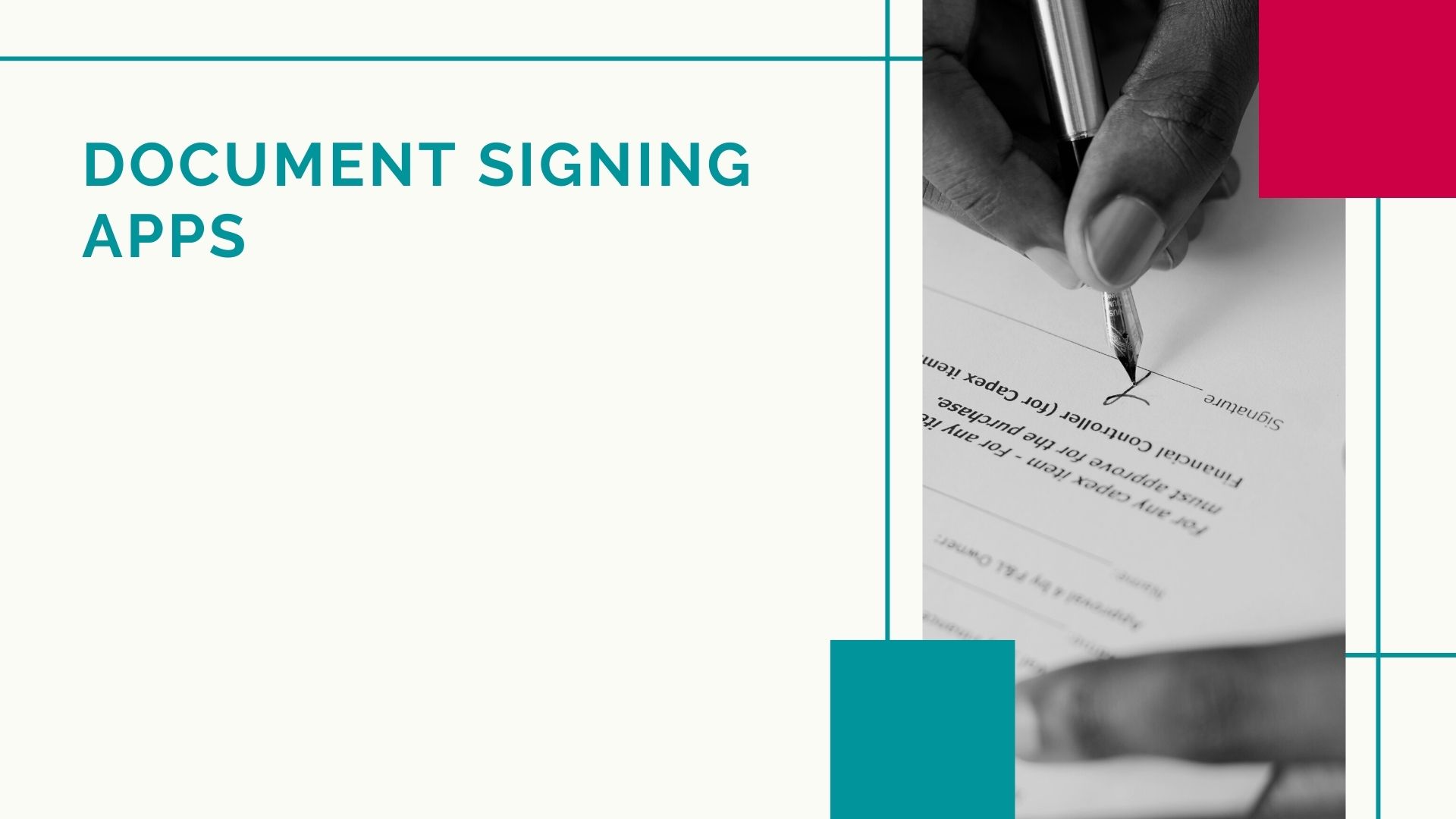
24. DocuSign
DocuSign is the world’s leading provider of electronic signatures. Their technology enables businesses:
- Link and automate the process of preparing and signing documents.
- Managing and closing deals.
The following are some of its key features:
- Document signing and bulk digital signatures.
- Signature history records and scalability for large enterprises.
- Custom branding and performance reliability.
- Signature workflow and reminders and expiration.
Pros
- The person signing the document can auto-populate fields and instantly send them across.
- Users can choose from a variety of document templates according to their needs.
- You can send large documents for a sign with a couple of clicks.
Cons
- You can’t make any minor edits or changes once you send it across.
- DocuSign is expensive if you don’t need to sign several documents.
Reviews
25. HelloSign
HelloSign is a tool for businesses to send and manage legally binding signatures. At SMB-friendly pricing, they offer workflow, security/compliance, and branding. Their features are:
- Reminders and notifications.
- Cloud storage integrations and document templates.
- Audit trail and 2-factor authentication.
- Data validation and reporting.
Pros
- Robust security features and in-person signing options make it flexible.
- It increases application processing speed.
- The tool offers several integration options and is cost-effective for small businesses.
Cons
- The templates are lesser in number when compared to other e-signature tools.
- Uploading large amounts of documents may take longer than expected.
- The UI is not as intuitive as other tools available.
26. PandaDoc
PandaDoc is a platform for automating document workflows. It helps generate, manage, and sign digital documents like proposals, quotations, contracts, and more. Their features consist of the following:
- Tracking customer engagement and receiving alerts and notifications.
- Automation, analytics, and branding.
- E-signatures, quotations, forms, and APIs.
- Proposals, payments, and contracts.
Pros
- Receive instant notifications and respond faster to keep engagement levels high.
- Lots of support is available within the platform, and it is easy to interact with their support team for answers to any issues.
- Document analytics gives insights into what areas the client spends most time reading.
Cons
- Automation integrations require payment and may be costly for many.
- Like some previous e-signature tools, you can’t edit documents once you send them.
- The mobile UX is not as user-friendly as the desktop version.
27. Eversign
Several businesses are hesitant to handle contracts and business agreements in the cloud. Eversign helps in creating a highly reliable and intuitive e-Signature platform. Its features include:
- Automating internal and client-facing documentation.
- Electronic and in-person signatures.
- Audit trail and templates for documents.
- Mobile signatures and enterprise scalability.
Pros
- You can effortlessly upload documents and add inputs like timestamps and signatures.
- The Dashboard is also helpful in keeping track of document status.
- It records each contact ID and allows you to send documents to them or examine old ones.
Cons
- The subscription-based pricing may cause issues for short-term users.
- It does not permit multiple signatures from the same individual.
- They do not provide a mobile app.
- The notifications are inconsistent at times.
28. SignRequest
SignRequest allows you and your partners to sign contracts. You can do this without having to print, sign, or scan them. That said, you can digitally draft and sign contracts with SignRequest. They offer the following features:
- Sign across various devices and authorization features available.
- E-signature, custom, and Zapier integrations.
- Custom landing pages and branding.
- Audit trail and SMS verification.
Pros
- They offer inexpensive basic packages that are free or cost-effective.
- Unlike other apps, it allows adding multiple members to sign a single document.
- Easy to use and intuitive.
Cons
- You can’t make any minor edits or changes in the mail ID once you send it across.
- The signing interface requires higher levels of functionality depending on users.
- Not the most mobile-friendly UI out there for signing apps.
29. SignEasy
SignEasy is a simple way to sign and transfer documents from your smartphone, tablet, or PC. Many productivity and business programs are available to integrate and use. Its features include:
- Parallel and sequential signing templates.
- Document progress tracking capabilities.
- Reminders and alerts workflows and cloud integration.
- SSL encryption and advanced security.
Pros
- Ease of operation and integration through google and mobile devices through the drive.
- Upload, edit, and transfer documents in seconds to customers around the globe.
- Its simple and powerful user interface is intuitive and easy to access.
Cons
- Lack of the ability to create templates that the user can reuse in the future.
- Users have to edit within the main screen, and they cannot do it outside of the main interface.
- Limitation in the number of documents one can sign per month.
Sales Prospecting Tools
According to HubSpot, more than 40% of salespeople say prospecting is the most challenging part of the sales process. Nonetheless, there is no substitute for prospecting. However, with powerful prospecting tools, sales reps can work more efficiently, and utilize the time saved in nurturing or follow-ups. Here are some of the best sales prospecting tools available out there.

30. LinkedIn Sales Navigator
LinkedIn Sales Navigator is one of the best sales prospecting tools as it allows you to utilize LinkedIn’s network of over 600 million professionals. Either you can find leads through the advanced search option, or you can use the tool’s recommendations to find prospective buyers in your niche. Below are some of the remarkable features of this tool.
- Helps in lead generation and building sales pipeline.
- Reach out to and engage with prospective customers.
- It helps you keep a tab on the lead and company changes (press releases, job changes, etc.).
- Seamless integration with CRM software.
Pros
- Allows salespeople to map senior-level leaders
- Users can search prospects in many ways like name, company, job function, designation, etc.
Cons
- Too many filters can be overwhelming for new users.
- Costly for individual users.
- Integration with popular tools such as Salesforce and Freshworks is sometimes not feasible.
- Many companies and employees in the SMB sector are not listed. Hence, it is not helpful for users to find leads from this sector.
31. LeadFeeder
Leadfeeder helps you find new leads and prospects. Even if they don’t fill out a form or contact you, it keeps track of people who visit your website. Additionally, you can identify prospects that you may not have been aware of before. It offers the following features:
- Reports, dashboards, and connections.
- Integrations to CRMs and other software tools.
- Industry research and vast data availability.
- Data accuracy and lead builder.
Pros
- It is simple to set up customized feeds, and it connects with Google Ads.
- You can create comprehensive reports using website visitor information.
- It easily integrates with major CRM and marketing automation solutions.
Cons
- There is a disparity between the premium and lite versions of the app in terms of access.
- Pricing options are not diverse or easy to assess.
- The app does not provide live support within the software.
32. ZoomInfo
ZoomInfo is essentially a massive database. It gives users all the data they require to qualify a lead. ZoomInfo allows you to go deeper into a company’s general information and behavior. They do this by incorporating sophisticated features and integrations into your processes. They offer the following features:
- Email and phone automation features.
- Workflows based on insight and business intelligence.
- Ability to understand buyer intent and create the ideal customer profile.
- Relationship management and data filtering/segmentation.
Pros
- It supports powerful technographic search with frequent database updates.
- When compared to competitors, data accuracy is very high.
- Cleanse or restore data from different sources.
Cons
- Without filters, ZoomInfo provides far too much information.
- The dashboard is not customizable.
- Their pricing strategy is unclear.
33. Adapt
Adapt is a multi-industry global B2B contact and company database supplier. It is a sales acceleration platform that includes Lead Builder and Prospector applications. Sales reps can connect faster, engage more leads, and begin prospecting right away. Its primary features are:
- Lead generation, analysis, and market insights.
- Lead builder and data enrichment.
- Data filtering and account-level insights.
- Customization and integrations for CRM and marketing automation tools
Pros
- Simple to use and accommodates a large number of contact details.
- Lead generation and finding new prospects are much easier due to access to many contacts.
- Quick and efficient, easy to use the software.
Cons
- Some domains or IDs may not be available for various reasons.
- Expensive for many small businesses or individual users.
- It may load slowly and lag at times.
34. lead411
lead411 offers extensive and accurate databases of contacts and businesses in the industry. Their sales intelligence makes it simple to find relevant organizations. Some of its features are:
- SWOT analysis and reports and dashboards
- Industry overviews and in-depth market research.
- Sales triggers that identify selling opportunities.
- Email and SMS templates and notes for follow-ups.
Pros
- Varied CRM integration options make information transfer easy.
- An excellent resource to find contacts that fall under your target audience.
- It provides qualified leads and accurate details.
Cons
- The website does take time to load and may lag for a few.
- Users have reported some instances where they haven’t been able to verify email addresses.
- The system becomes slow when there are heavier amounts of information.
35. Prospect.io
There are various ways to find leads and their contact details with Prospect.io. When exploring LinkedIn, use the Chrome extension to find lead emails. Once you’ve compiled a lead list, use Prospect.io to automate drip marketing and follow-ups.
Prospect.io connects directly with many CRMs, allowing you to reduce manual data entry. It includes the following features:
- Customizable sales pipeline
- Contact management and workflows
- Reporting and forecasting sales
- Drip campaign automation
Pros
- The customer service team is responsive to any call and fixes issues as soon as possible.
- The software is user-friendly, and the customization options are straightforward.
- Creating new workflows and using their automation takes little to no effort.
Cons
- Users need to check the email validity as the ones they source may at times bounce.
- They do not have a vast pool of data to mine prospects.
- There is no mobile app as of yet.
36. LeadIQ
Prospecting should be enjoyable. Unfortunately, many salespeople despise prospecting. LeadIQ automates the most time-consuming aspects of sales prospecting. They offer the following features:
- Prospecting workflow and analytics dashboard.
- Integrations with various software tools.
- Sales automation and data filtering.
- One-click capture and data verification.
Pros
- It is easy to add prospects to campaigns.
- The user interface is simple.
- When you have successfully converted contacts, you will receive real-time confirmation.
Cons
- Phone numbers may not appear with email IDs at times which can be frustrating.
- Data accuracy needs improvement in terms of contact information.
- It’s a relatively new tool that has basic features and needs overall development.
Scheduling Software
Finding time suitable for both prospects and your team members for meetings can eat up a lot of your time. On top of that, if the prospect/customer is located in a different time zone, finding a suitable schedule can become even more frustrating. Whether you conduct meetings virtually or in person, scheduling software is always helpful. Some software also allows rescheduling and sends reminders to required attendees to make that meeting a success.
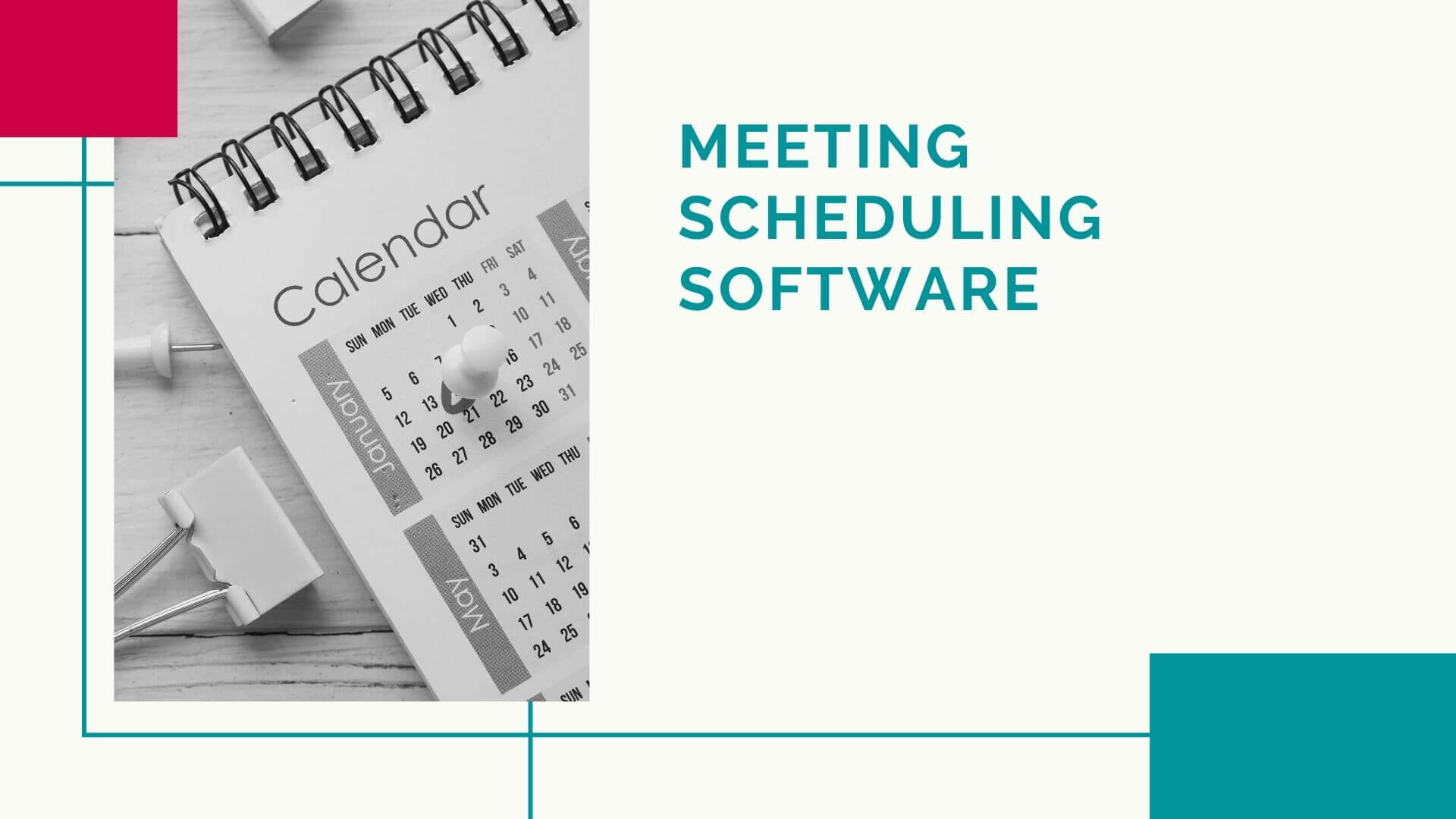
37. Calendly
Calendly is your one-stop-shop for professionally and efficiently organizing meetings. It is an intuitive scheduling tool with collaboration capability. Its features include:
- Activity dashboard and tracking.
- Notifications and alerts.
- Client database and portal collaboration
- Customizable branding and confirmation/reminders
Pros
- Appointment scheduling is customizable to your needs.
- It easily integrates with various platforms.
- Exceptionally user-friendly and free to use for the basic version.
Cons
- Customers cannot respond to text reminders.
- It doesn’t automate all the tasks. Therefore hard to use for clients who aren’t tech-savvy.
38. Doodle
Doodle is an effective way to arrange meetings with clients, co-workers, and teams. You can choose the best time for one-on-ones, team meetings, and more with Doodle. Their features comprise:
- Confirmation and cancellation of meetings
- Create polls and surveys and distribute them to attendees.
- Meeting schedules
Pros
- Clear and easy to understand UI
- You can personalize every survey you create
- Excellent to use in cases of divergent schedules
Cons
- The reminders are not automated.
- The app has now become paid, making access harder than before.
- The functionality may seem limited when compared to other apps.
39. Acuity Scheduling
It’s like having your assistant for scheduling, except better. Booking appointments with your clients and customers is a breeze with Acuity Scheduling. You can pay in advance by Square, Stripe, or PayPal and even cancel or reschedule appointments. These are the features they offer:
- Scheduler and meetings organizer
- Online payment gateway and customized branding.
- Integrations with third-party apps like MailChimp
- Auto-notifications and reminders
Pros
- It prevents errors by automatically updating and adjusting calendar entries across time zones.
- Track your earnings by looking at thorough reports of paid and unpaid appointments.
- The software complies with HIPAA regulations. It protects the privacy of its customers’ data.
Cons
- They need better training to ensure that users are aware of all the features.
- Reminder notifications are hourly.
- Multiple rooms are not available in the free version.
40. YouCanBook.me
Every booking is the result of a decade of expertise in designing scheduling solutions. Reclaim the time you’ve been wasting on back-and-forth emails trying to set up a meeting. You can reduce no-shows to increase your team’s efficiency with YouCanBook.me. Their features include:
- Configurable booking and custom shorthand codes.
- Appointments, reminders, and notifications.
- Email confirmations and SMS alerts.
- Automatically detect time zones.
Pros
- When there is a problem with the program, customer service replies swiftly.
- Provides branding options to create your company’s unique look and feel.
- With appointment reminders, users can send customized messages based on the event.
Cons
- You’ll need to write code to customize or hyperlink the content of the heading on the booking page.
- It’s a little tricky to get to the integrations screen at first.
- It has limited design options.
41. Square Appointments
Square Appointments is a cloud-based appointment management system. It lets professionals manage bookings, appointments, and payment processing. The solution is perfect for small and large merchants in many service industries. They offer the following features:
- Scheduling and online reminders with alerts.
- Payment processing and transaction history.
- Profiling customers combined with notes.
- Integrations with certain apps.
Pros
- Allows you to prioritize customers and staff with client profiling and team management tools.
- Receive automated reminders so that you don’t have to alert clients.
- User friendly, simple, and free for all to use.
Cons
- The number of colors and designs is less in number when compared to competitors.
- Not completely customizable.
- There are character limits in lists you create.
42. Schedulista
Clients can plan appointments through various methods with this cloud-based software solution. They can use email, SMS, social media, etc. Schedulista shines with its mobile apps, which are available for both iOS and Android. They offer the following features:
- Integration with different websites
- Customizable appearance
- Control over the calendar
- Sync multiple calendars simultaneously
Pros
- Automatic reminders keep you and your customers on the same page.
- You can fine-tune what you need with deep adjustments.
- The user interface is simple. So even the first-time users don’t feel overwhelmed.
Cons
- It is expensive when compared to various other scheduling apps.
- The App caters to the US audience. A week starts on Sunday, unlike European countries that start on Monday.
Analytics and Reporting Tools
People generally don’t realize how much time they spend doing paperwork or data-related work. For instance, data collection, approvals, and updates are the top productivity killers. According to Smartsheet, workers could save at least six hours a week with automation. This is where analytics and reporting tools come in handy. This set of sales productivity tools covers automated reporting tools.
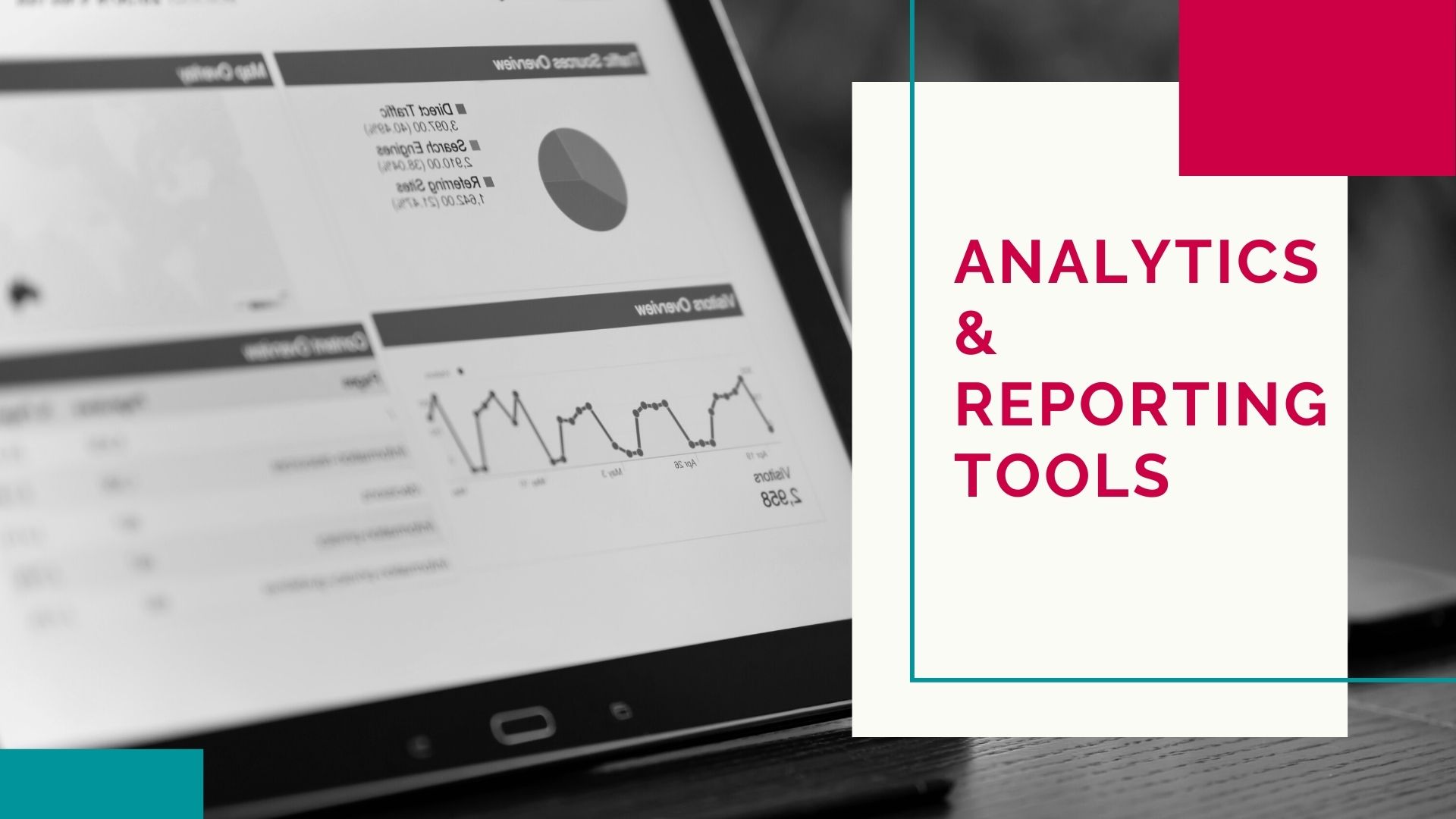
43. Clari
Clari’s Revenue Operations Platform boosts revenue efficiency, predictability, and growth across the board. It provides sales teams with a 360-degree view of your business, allowing you to improve operational rigor, identify risks and opportunities in the pipeline. Their features include:
- Data sourcing and predictive analytics
- Live pipeline management
- Gamification and account-based analytics
- Sales forecasting and risk analysis
- Interactive dashboards and segmentation of data
Pros
- Allows for real-time mobile forecast updates while on the move.
- Everyone can observe the forecast scenario thanks to the management roll-up.
- It accurately showcases all active deals and their stages.
- With this tool, users don’t have to build individual breakouts or reports to get valuable insights.
Cons
- It doesn’t pull all the granular data. It would be useful to see the real data points that drive the company’s operations.
- Some people may notice that the appearance is unclear at times.
- The CRM score accuracy levels need improvement.
44. Aviso
Aviso is an integrated platform that uses AI coaching to help modern sales organizations. They enable businesses to close more deals, increase revenue growth, and manage risk. Some of its features are:
- Multi-Device Data Visualization
- Time series database
- Auto-nudge engine and automated machine learning
- Forecasting and opportunity scoring
Pros
- ARR forecasting is achievable at many levels of an organization’s hierarchy.
- The level of customization is outstanding, and the tool offers valuable suggestions.
- Aviso is simple to use, gives unique insights, and excels at sales forecasting.
Cons
- The reporting interface is a little confusing and lacks customization.
- Dashboard features such as pipeline evolution are not available.
- The ability to generate a custom report and save it for future use has limits.
45. Weflow
Weflow is designed to help revenue teams improve Salesforce hygiene, increase sales pipeline visibility, and improve forecasting accuracy.
Here are some of its main features:
- Custom sales pipeline views help simplify pipeline reporting and management.
- Automated sales activity tracking and email logging improve Salesforce data hygiene.
- Notes and note templates that help your team adhere to your sales process and methodology.
- Sales forecasting feature simplifies the entire forecasting process.
Pros
- Eliminates manual CRM data entry, saving time for your team and improving data hygiene.
- Increased sales process adherence, which leads to better win rates.
- Better sales forecasting accuracy thanks to improved data hygiene.
Cons
- Weflow only works with Salesforce, so if you’re useing another CRM, you’re out of luck.
- The browser extension support is limited to Chrome.
- Since the software is still in its early stages, reviewers have reported a few bugs that may slow down sales operations.
45. InsightSquared
InsightSquared transforms data intelligence into actionable insights to help sales teams improve their performance. It imports data from your CRM and provides reports and visualizations that help you make better decisions. Its features include:
- Data column filtering and reports interface
- Data sourcing, exporting & sharing
- Predictive sales forecasting
- Advanced analytics and activity tracking
Pros
- Both CRM administrators and revenue executives will benefit from the data modeling versatility.
- Dynamic dashboards that indicate pipeline updates and provide data integrity and visibility support are impressive.
- Easy to use, and their team reportedly offers guidance and support.
Cons
- Limitations in customizing some dashboards.
- Nuanced sales forecasting may be difficult to get used to.
- Role hierarchy depends on the Salesforce platform.
46. Tableau
Tableau is an easy-to-deploy desktop-based data analytics and business intelligence solution. Many customers rely on its report generating and data visualization capabilities. These are some of its features:
- Advanced analytics and report building
- Data discovery and auto-modeling
- Data transformation and dashboards
- Data visualization and predictive analytics
Pros
- Data visualization like no other, Tableau is easily one of the best BI tools.
- It offers high-performance speed and robust software capabilities.
- It supports multiple sources of data in one platform.
Cons
- Tableau is expensive as large enterprises are its customers.
- Properly using the platform is difficult as there are many data visualization options.
- The software is not user-friendly and may be complex for first-time users.
47. People.AI
People.ai is a revenue operation and intelligence (ROI) platform. It gives enterprises data automation, insights, and persona-specific productivity tools. Sales, marketing, and revenue operations get full transparency into their organization. People.ai’s features include:
- Personalization of profiles and custom reports.
- Sales gamification and account-based analytics.
- Activity tracking and opportunity scoring.
- Integrations with CRMs, marketing, and sales tools.
Pros
- Easy access to the user’s progress over time and constant updates boost productivity.
- The UI is very user-friendly. Users don’t have to enter any data manually.
- Tracking user activity provides in-depth insight into the user data.
Cons
- Data needs to be more granular and specific to help users understand results better.
- The calls do not sync in real-time, which may reduce productivity levels for some.
- It pulls data from a single source which may create issues for multiple source users.
48. Sisense
Sisense is a flexible business intelligence (BI) solution. It includes powerful analytics, visualizations, and reporting capabilities. Businesses use this solution to evaluate large, diverse databases. They provide the following features:
- Advanced analytics and report building.
- Data column filtering and collaborations.
- Data visualization and API integrations
- Dashboards and data unification
Pros
- Accurate and real-time data analysis.
- The company provides comprehensive training and consistent support.
- Its dynamic dashboards are accessible across devices.
Cons
- Lots of information and dashboards make searching for some information difficult.
- The server is reportedly slow at times, and the Elasticube (their analytics database) is not as accessible on mobile.
- The dashboards are web-based and require an internet connection to access them.
49. Domo
Domo analyses data from all your departments to give actionable insights and indicators. Its simple data visualizations help improve cross-organization collaboration and uncover new opportunities. Its features include:
- Steps to answer, graphs and charts, and dashboards.
- Calculated fields and data filtering.
- Data visualization and transformation.
- Live data entry and reports and analytics
Pros
- It gives you the ability to make varied kinds of graphs with multiple visual options.
- It provides user-friendly dashboards and interfaces for beginners.
- A single space within which you can collate large amounts of data and identify trends.
Cons
- Large datasets can cause slow processing speed.
- It is expensive, and prices are not available unless you reach out to vendors.
- Users have reported difficulty when extracting large amounts of data.
- An on-premise solution is not available.
Time Tracking Tools to Boost Productivity
Time tracking software allows you to monitor time spent on any particular task or project. It is also helpful for organizations that employ agents, freelancers, or hourly workers. Individuals or consultants can also use these tools who bill their clients by the hour.
Below are some of the best and easy-to-use time tracking software and apps.
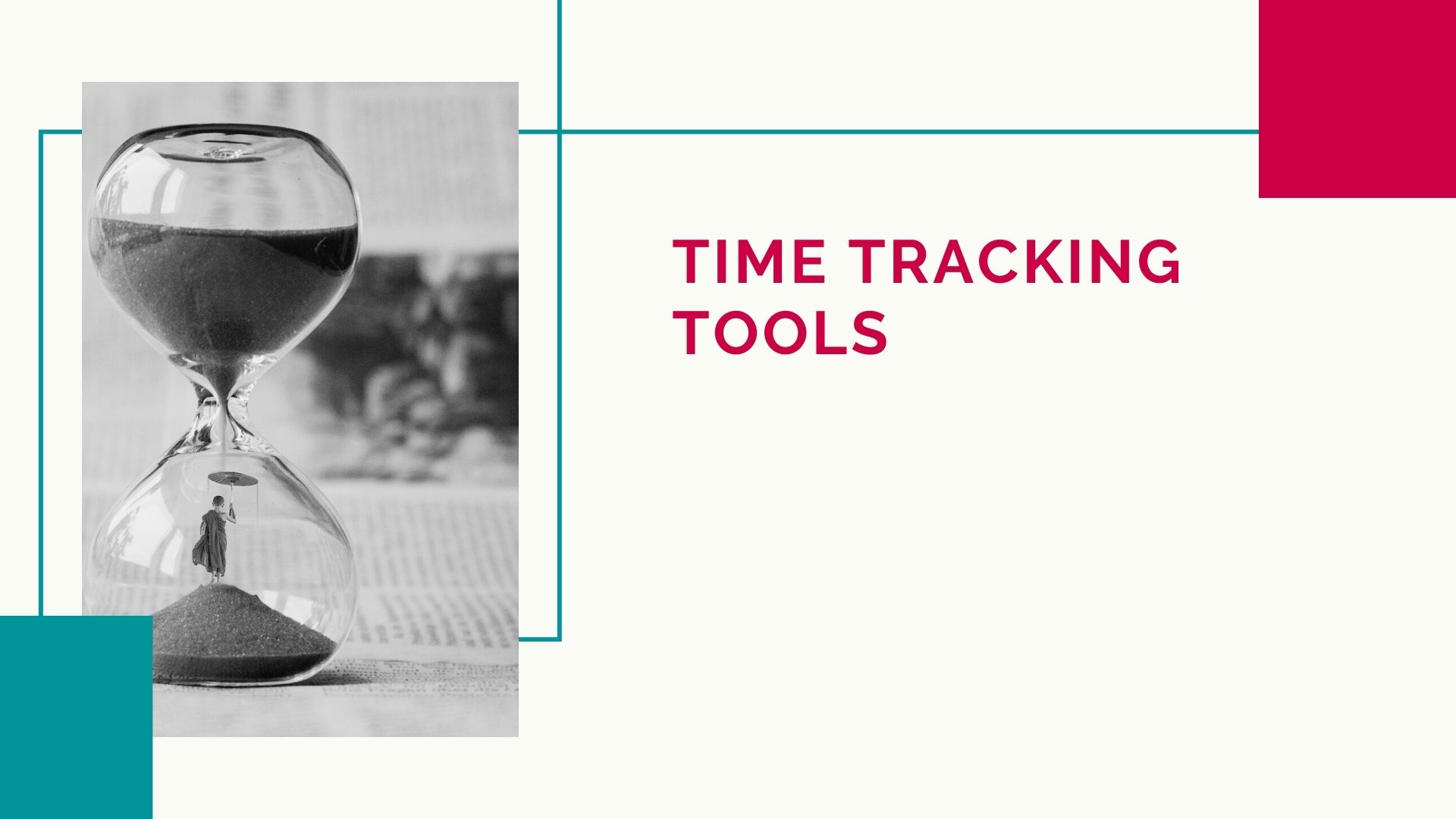
50. Toggl
Toggl Track is a time management program that integrates with any workflow. It supports real-time tracking across several devices used concurrently. Toggl carries the following features:
- You can categorize time, entries, clients, projects, and tasks.
- Detailed reports that you can filter and save.
- Note how much time you spend on web pages with specific keywords.
- Keep track of how much time you spend on different apps, websites, and other resources.
Pros
- Toggl’s tracking system is easy to use.
- When you implement the software, you do not need to provide in-depth training for your sales reps.
- Setting a timer for a new task is effortless with one-click timers. You can also use many timers at the same time.
Cons
- Toggl is not ideal if you want a range of capabilities other than time monitoring.
- It excludes features such as billing and scheduling.
- Toggl is far more expensive than other time monitoring apps in the market.
51. Everhour
Everhour is one of the most popular time-tracking applications for teams. It shows who’s keeping track of time, who’s overworked, and who’s capable of taking on more. With this tool, you can track your project budgets, set up threshold notifications, and plan. It consists of the following features:
- Know how much time each employee spends on projects. The number of hours they work, and how long they take off.
- Within one entry field, discover and time track any task quickly.
- Sends notifications about timers and reminders to keep track of time.
- It easily integrates with software like Basecamp, Asana, Jira, and more.
Pros
- It features a robust reporting engine to generate a variety of reports.
- It is user-friendly and intuitive, so it requires less training.
- Everhour is free for personal use, or you can pay a minuscule amount for some additional features.
- The support team is highly responsive.
Cons
- The inability to categorize hours inside a single activity can cause issues.
- Customizing daily/weekly summary emails are not accessible.
- Usability and user-friendliness decrease significantly on the mobile app.
52. Timely
Timely is an automatic time-tracking program to track emails sent, websites visited, documents worked on, meetings attended, and more. The software automatically generates a timesheet at the end of the working day. It offers the following features:
- Automated time tracking.
- Capture billable details and reports.
- Analyze plans, sync employee calendars, and assign tasks with simple drag-and-drop.
- Timely offers integrations with various tools like Trello, Toggl, and more.
Pros
- Timely is great at keeping track of what you’re doing. So, you don’t need to keep a physical journal.
- It helps predict how much time to devote to particular jobs.
- It’s nearly automated and generates reports in a matter of seconds.
Cons
- It does take a good amount of time and effort to understand and use the app effectively.
- The AI for suggesting logs needs improvement.
- Sometimes it categorizes a task under the wrong area, but this gets better when you use the software for a long time.
53. Quick Books Time
Quick Books Time is a time management and scheduling app that can track time in real-time from any location – whether they’re in the office or on the road, utilizing a smartphone, tablet, desktop, or laptop. It offers the following features:
- Time tracking, team management, and reports.
- Cashflow management and payment acceptance.
- Track inventory and use accounting software.
- Track expenses and income.
Pros
- Support—their help desk staff is responsive and quick to answer.
- Accessibility and usability: the app is user-friendly and intuitive.
- It’s convenient to clock staff in and out at several events on the same day by categorizing them.
Cons
- Occasionally the GPS will drop a pin that isn’t exactly where the employee was when they clocked in or out.
- The app can tend to drain the battery on mobile.
- The website is undergoing continual modifications, making it difficult to log in.
54. RescueTime
Rescue Time tracks the apps you use, which files you open, and what websites you visit. It logs how much time you spend on each of them. It has a pause button pre-set for 15 minutes and one hour, making it easy to disable during breaks. The app offers the following features:
- Time tracking for projects and tasks.
- Mobile time tracking and performance reliability.
- Billable time rate management with APIs and integrations.
- Reporting and timesheet entry.
Pros
- It works seamlessly in the background of your device.
- Accurately tracks time spent in apps and on websites.
- Ease of customization and high-quality reporting.
Cons
- The interface is out-of-date and unappealing and could use improvement.
- Certain areas of the report are not accessible to users with a free plan.
- The mobile application needs improvement.
55. Harvest
Harvest makes it easy to track time for different clients and tasks. All you have to do is start a timer from your device. Harvest then converts the information from your timesheets into reports. They offer the following features:
- Time tracking and automated reminders.
- Visual reports and analytics with insights.
- Invoice generation and payment tracking.
- Workflow integrations with calendar sync.
Pros
- Harvest is straightforward and adaptable, according to many project managers.
- It smoothly handles all invoicing, reminders, and client payments.
- Harvest’s two pricing plans—free and subscription—have made it more accessible.
Cons
- Some users have felt a gap between the desktop software and the website.
- There aren’t any sales tax integrations that may be necessary for some users.
- Harvest allows users to select time increments of 6, 15, 30, and 60 minutes. Many users, on the other hand, prefer more possibilities.
In Conclusion
These were some of the best sales productivity tools available in the market. Every software on this list has its pros and cons, but before you decide, keep these points in mind-Some tools serve specific needs. For example, Toggl specializes in time tracking. If that’s your primary need, you can go for it.
However, if you’re looking for a comprehensive tool that encompasses most of these features, choose a CRM that comes closest to offering all your needs. Instead of investing in multiple products, pick a one-stop solution.
LeadSquared is one such solution that caters to all your sales productivity needs. With field sales, tracking, pipeline management, and more, LeadSquared Sales Execution CRM is a powerful asset for your organization.










